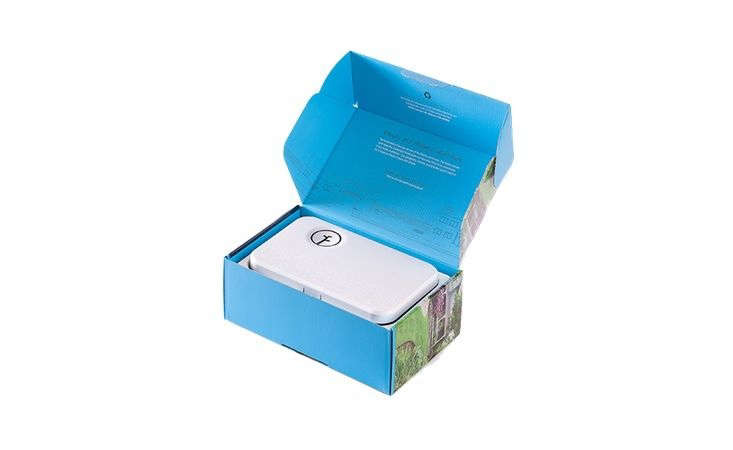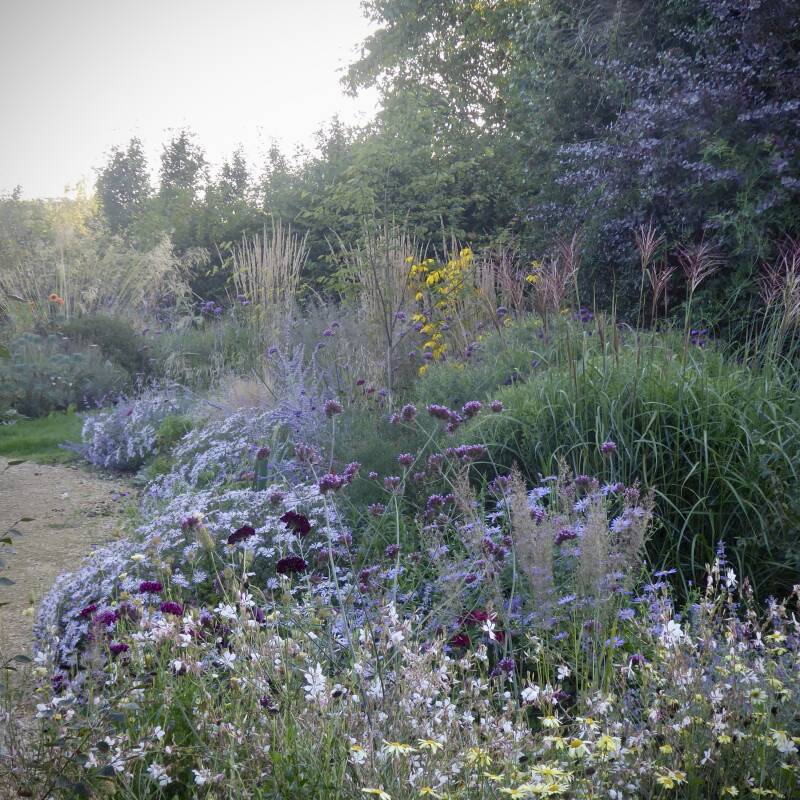Let’s say you already have an automatic sprinkler system—but it’s not too smart. Even when it’s pouring outside, the control box doesn’t have a clue; it just merrily turns on the sprinklers to water the lawn anyway. You knew it was supposed to rain—but you forgot to adjust the system’s settings.
You need a smart sprinkler controller. And by smart, we mean it doesn’t just put the sprinklers on hold whenever the rain is pelting down; it checks the weather forecast for your geographic area in advance. What’s more, you can program it to customize the water it delivers according to your garden’s type of soil, the amount of sun exposure in different parts of your garden, and what’s growing where. And you can do all that from your smartphone or tablet.

How does a smart irrigation controller work?
To use one of these devices, you need to have already installed an underground irrigation system. (If you’ve got this, you know it comes with a controller that you program to water your garden on a regular schedule.)
But a smart irrigation controller takes away all the guesswork. Connected to your home’s Wi-Fi network, this device accesses local weather data from the internet and adjusts the watering schedule according to upcoming conditions: rain, high heat, humidity, or freezing temperatures. Some devices employ soil monitors (usually a spike that you push into the ground) to check existing moisture levels. And many of the devices will send you messages to alert you of any changes—say, that the day’s watering is cancelled due to upcoming showers.
To fine-tune how much water goes where, you can program the controller so it knows the different microclimates in different zones of your garden. You can set it for the type of vegetation (lawn, shrubs, trees, flowers, vegetables), type of soil (clay or sand?), \ amount of sun or shade received, and even the slope of your land, which will indicate the degree of runoff.

What are the advantages of a smart irrigation controller?
- Because you program the device from your smartphone, you’ll be able to fine-tune your watering system from wherever you may be—whether you’re inside on the couch, outside on a lawn chair, at work in your office, or somewhere far afield on vacation.
- You’ll waste less water. Manufacturers promise that because the device automatically adjusts watering schedules seasonally and depending on the weather, you’ll use anywhere from 30 to 60 percent less water than before. That’s a boon to drought-stricken parts of the country, and a money saver wherever you live. We all need to be more conscious of wasting this precious resource.
- If you plan to be away, you can authorize other users, giving access to family members or your landscaper in your absence.

Are there different types of smart irrigation controllers?
Some operate only with an Android system, others with iOS, but many play well with both. While some can only be programmed with a mobile device, many let you override the programming the old-fashioned way—manually, at the panel itself.
Some controllers are meant to be installed inside the home; others may be mounted indoors or on an exterior wall. An indoor controller may have an optional weatherproof casing that lets you install it outdoors.
The number of zones vary: Some controllers will customize watering for 8 designated zones, others go as high as 16.
Is a smart irrigation controller hard to install?
In most cases, it’ll take you less than half an hour to swap in the new controller for your old control box. You’ll need to transfer the wiring, install the app on your mobile device, and then follow the directions to connect your smartphone to the device. The devices come with full instructions and often an online video.
What are the top brands of smart irrigation controllers?
Here are some of the best-reviewed devices:
Rachio Smart Sprinkler

Many reviewers have weighed in on the Rachio device, and overall reports are very good. The Rachio is easily installed; its app works for both iOS and Android systems. The optional outdoor enclosure ($30) makes the controller weatherproof.
Rachio lets you choose fixed or flexible schedules for watering, but either way the controller makes daily adjustments depending on weather conditions. Let’s say low temperatures are forecast; the Rachio will automatically skip watering that day.
Depending on your garden’s size, you can choose an 8-zone or a 16-zone model. When setting up your zones, you can specify the type of sprinkler head (whether it’s rotating, fixed, or drip). And if you say your soil has a high clay content, Rachio’s Smart Cycle will direct short bursts of water, allowing intervals for the water to sink into the ground, thus reducing runoff and waste.
The Rachio can be integrated with a number of smart-home automation networks, including Nest, Amazon Alexa, Wink, Control4, Nexia, and others.
Orbit B-Hyve Timer

The B-hyve’s easy-to-use app works with both iOS and Android devices. The timer itself has a large LCD screen so it’s simple to operate manually, and a weather-resistant locking cabinet that can be mounted indoors or outdoors. If your Wi-Fi goes out, the timer will continue to water according to the stored schedule, or you can make changes manually. The B-hyve works with the Amazon Alexa hub. It’s also available in a 6-station model.
Spruce Irrigation Controller

To use the Spruce, you must have a Samsung SmartThings Hub installed in your home. Spruce’s irrigation controller adjusts the watering schedule according to your area’s weather forecasts, and also adjusts for landscape and season, but this system also has sensors that indicate real-time soil moisture data. As a result, you’ll be watering only when it’s needed. Spruce can handle as many as 16 sensors (one for each zone, if you like), but you need to purchase them separately—at about $60 per spike.
Rain Bird Timer

The Rain Bird company makes complete irrigation systems, so if you’re starting from scratch—that is, you haven’t yet installed an underground system—this could be a good company to go with. Its ST8 WiFi Timer (ST8i for the indoor model, ST8o for outdoor) is easily integrated with the system. You can use your mobile device (iOS or Android) to customize the watering for 8 different zones, and you can also water a zone by making manual adjustments. The app lets you share access to your controller with others (without giving them your password). Optional sensors are also available.
How do I know which smart controller is right for me?
Obviously, you’ll have to consider your individual needs and do your homework before you buy. When you’re reading tech websites and customer reviews, be aware that these high-tech devices are often upgraded yearly as manufacturers scramble to capture the marketplace. So make sure the reviews you’re reading pertain to the latest model.
If you’re a techie, you’ll find lots of ways to customize your smart controller—the possibilities are endless. But even low-tech types can find a controller that is easy to operate, will make your garden happy, and will save money and water as well.
For more in our series of our Smart Home posts, see Hardware 101: Smart Doorbells.








Have a Question or Comment About This Post?
Join the conversation